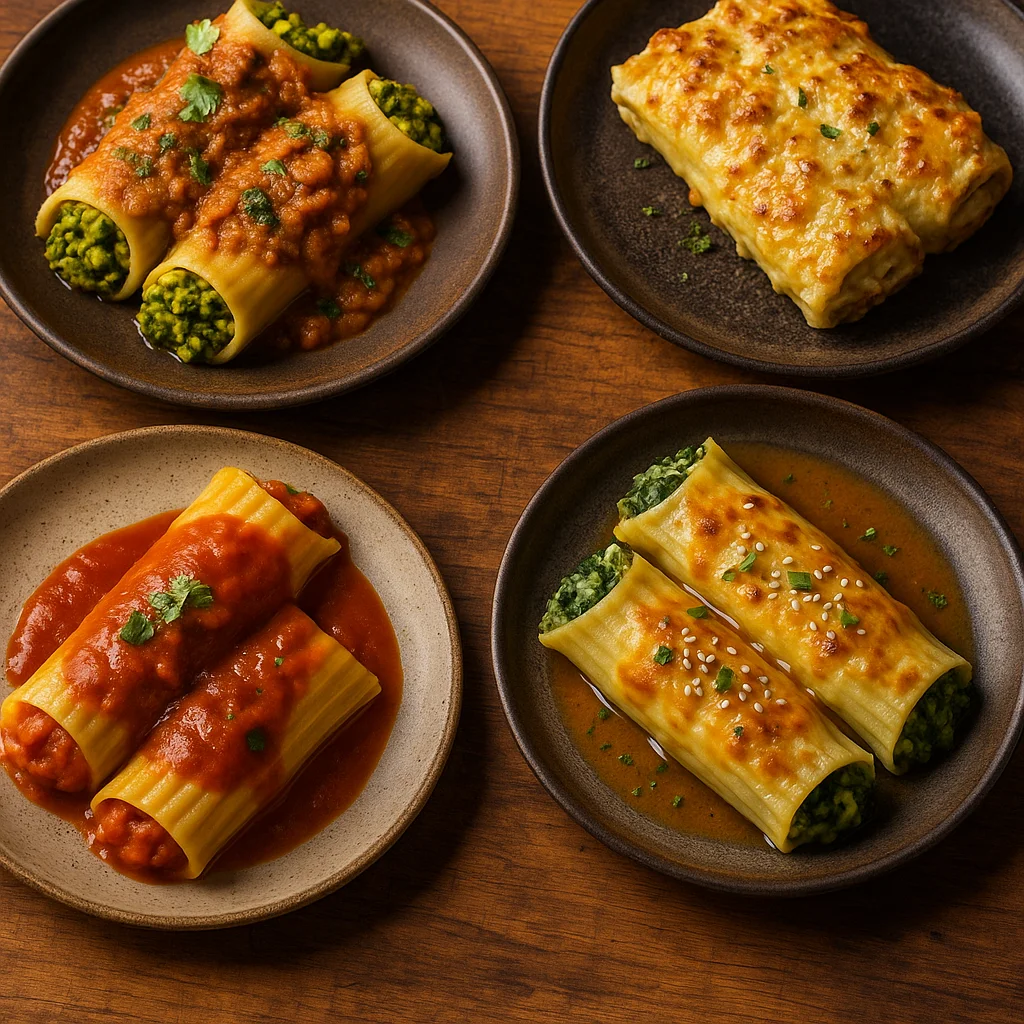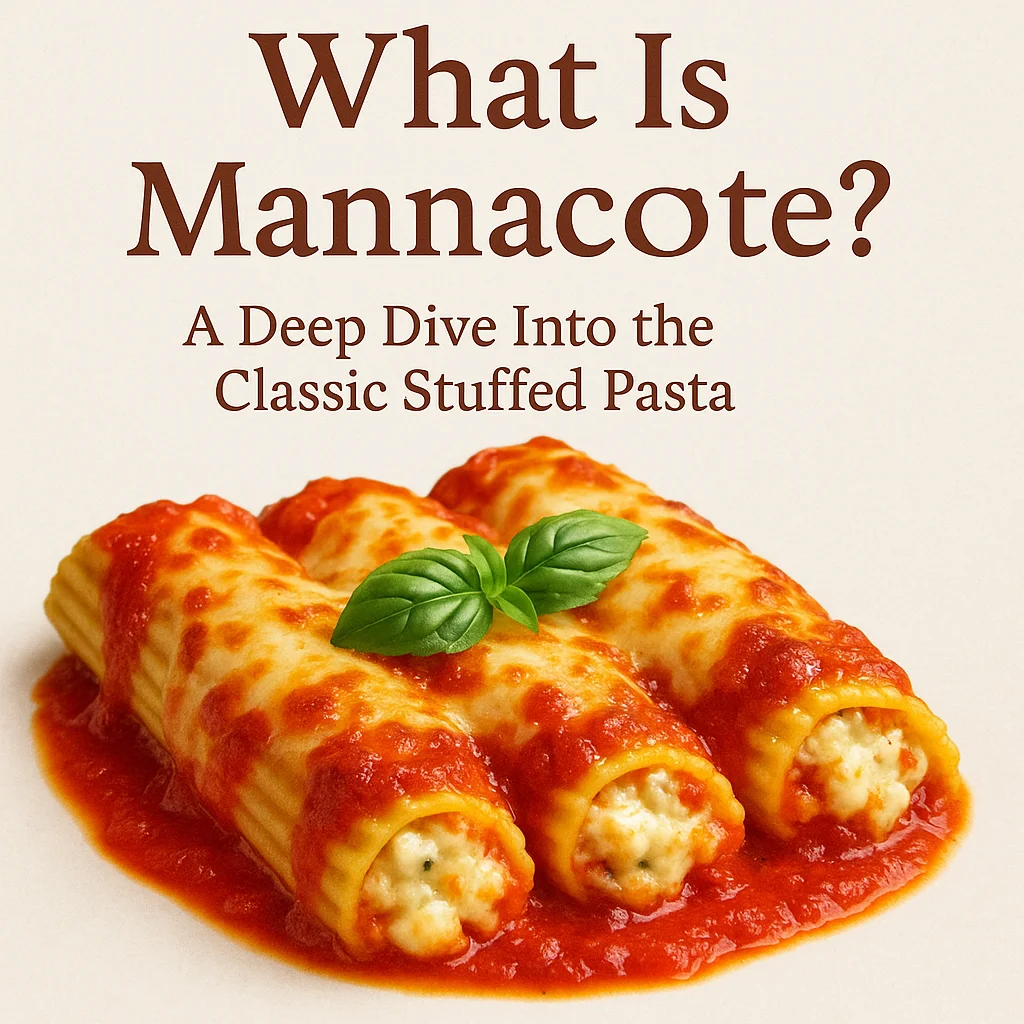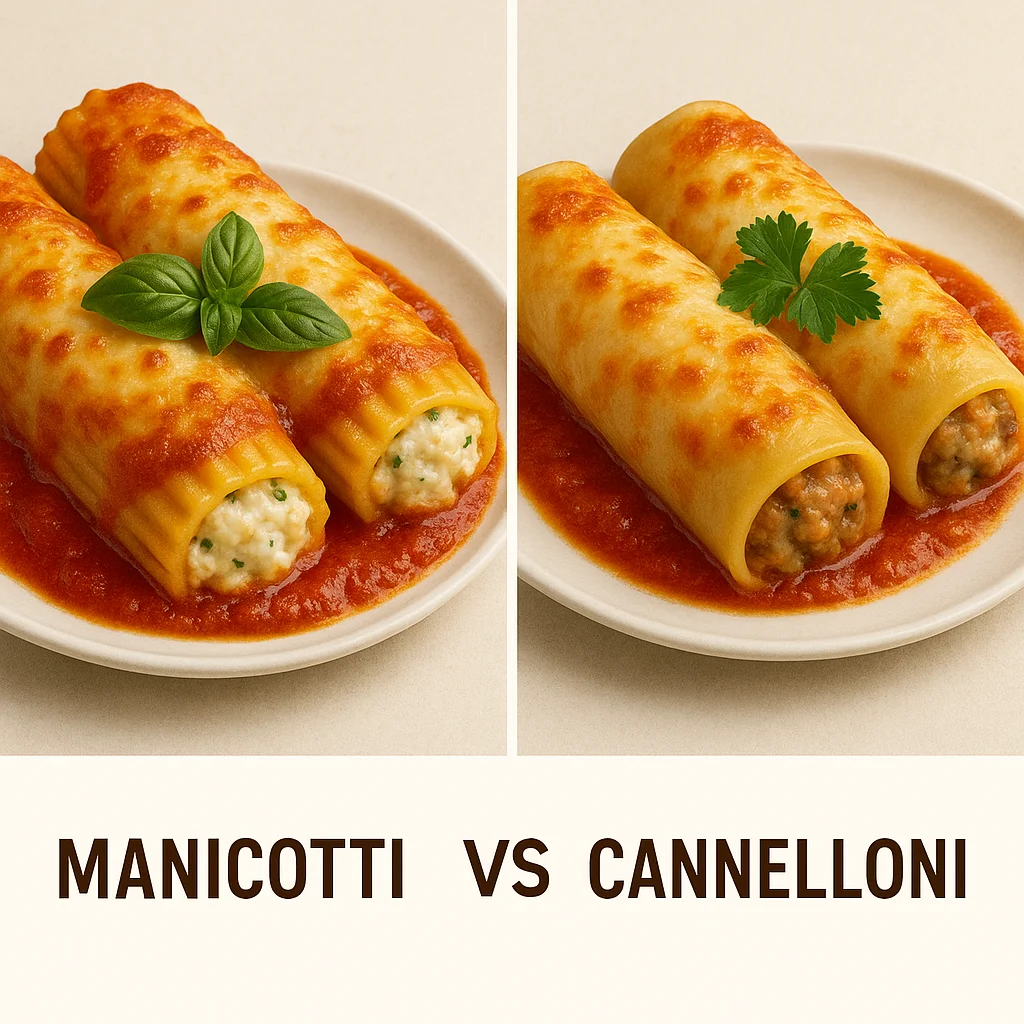Manicotti, with its iconic tube-shaped pasta shells filled with creamy ricotta and topped with savory tomato sauce, has long held a beloved place in Italian-American cuisine. While its origins are deeply rooted in Southern Italy, manicotti has become a canvas for culinary creativity across the globe. As different cultures embrace and reinterpret the dish, they add their unique flavors, techniques, and ingredients—turning manicotti into a versatile global phenomenon.
In this article manicotti around the world, we explore how manicotti is adapted in various countries, how regional ingredients and traditions influence its transformation, and why it continues to resonate with home cooks and chefs worldwide.
What Is Traditional Manicotti?
Before diving into global variations, it’s essential to understand the traditional version of manicotti. The word “manicotti” means “little sleeves” in Italian, referring to the large pasta tubes that are typically boiled, filled with a mix of ricotta, mozzarella, and Parmesan, then baked under tomato sauce. Some versions use crepes instead of pasta tubes, especially in southern Italy, where this style is closer to the classic cannelloni.
The American Take on Manicotti
In the United States, manicotti evolved into a hearty comfort food served in Italian-American homes and restaurants. The fillings often include a mixture of ricotta cheese, herbs, and sometimes ground beef or sausage. It is a staple dish during holidays and family gatherings, typically accompanied by garlic bread and salad. The emphasis is on richness, volume, and bold flavors.
Manicotti Meets the World: Cultural Adaptations
1. Mexico – Manicotti Enchiladas
In Mexico, manicotti takes on a Latin twist. Instead of a classic marinara sauce, cooks may use a tangy green tomatillo or spicy red enchilada sauce. The filling might include spiced ground beef, Oaxaca cheese, or even black beans for a vegetarian option. The result is a fusion dish that combines the comforting structure of manicotti with the bold, spicy notes of Mexican cuisine.
2. India – Spiced Paneer Manicotti
Indian cuisine’s love for paneer makes it a natural substitute for ricotta. Indian manicotti variations often feature a filling made from crumbled paneer, mixed with garam masala, turmeric, and fresh cilantro. The pasta is then baked in a mildly spiced tomato-curry sauce instead of traditional marinara, creating a dish that respects both culinary traditions.
3. Japan – Miso-Infused Manicotti
Japanese chefs, known for their skillful adaptations, often take manicotti in a lighter, umami-rich direction. Fillings might include tofu, shiitake mushrooms, or ground chicken, seasoned with miso and soy sauce. Rather than a heavy tomato base, a light dashi or miso-based glaze might be used. The result is a delicate yet flavorful version that aligns with Japan’s preference for balanced, subtle flavors.
4. France – Manicotti au Gratin
In France, the influence of gratin techniques transforms manicotti into a more refined dish. French manicotti may be filled with béchamel-infused cheeses, spinach, or ratatouille-style vegetables. The topping often includes Gruyère or Comté cheese, and the dish is baked until golden and bubbly. This approach adds elegance and richness while maintaining the essence of baked pasta.
5. Middle East – Manicotti with Lamb and Yogurt Sauce
In Middle Eastern kitchens, manicotti is infused with regional spices and hearty meats. Ground lamb seasoned with cumin, cinnamon, and allspice replaces the typical Italian sausage. Instead of tomato sauce, cooks may use a tangy yogurt-based sauce or tahini dressing. The result is earthy, spiced, and deeply satisfying—bringing together the best of both worlds.
How Ingredients Influence Global Manicotti
The beauty of manicotti lies in its adaptability. Whether the region has access to fresh ricotta, local herbs, or spicy chili-based sauces, the dish molds itself around available ingredients. Here’s how:
- Cheese: In place of ricotta, cultures use paneer (India), queso fresco (Mexico), tofu (Japan), or labneh (Middle East).
- Protein: Ground meats vary from beef and chicken to lamb and seafood, depending on the region’s dietary preferences.
- Sauces: Tomato sauces are replaced by curry gravies, soy-based broths, enchilada sauces, or creamy yogurt sauces.
- Spices: Traditional Italian herbs make way for local blends like garam masala, harissa, or shichimi togarashi.
Why Manicotti Works Globally
Manicotti succeeds across cultures because of its flexible format and universal appeal. Its foundation—pasta filled with something creamy or meaty and baked with a sauce—mirrors comfort foods from many culinary traditions. Here’s why it’s so globally successful:
- Structure for fusion: The pasta shell acts like a vessel, allowing endless filling variations.
- Baking versatility: It can be baked in any kind of oven, adapted to home or professional kitchens.
- Comfort food factor: Whether it’s spicy, savory, or subtle, it delivers the warmth and satisfaction people crave.
Modern Trends: Plant-Based and Gluten-Free Manicotti
As dietary preferences shift globally, new versions of manicotti are also emerging:
- Vegan manicotti: Using tofu, cashew cheese, or lentil purées as fillings.
- Gluten-free manicotti: Using gluten-free pasta or even vegetables like zucchini and eggplant as substitutes for pasta shells.
- Keto-friendly versions: Employing egg crepes or almond flour wraps as alternatives to traditional pasta.
These adaptations not only cater to health-conscious eaters but also demonstrate how manicotti continues to evolve while staying true to its core.
Final Thoughts
From Italy to India, Mexico to Japan, manicotti has become a global dish—malleable enough to embrace regional flavors, yet strong enough to retain its comforting core identity. Its ability to adapt to different culinary landscapes speaks volumes about its universal charm. Whether filled with classic ricotta or experimental local ingredients, manicotti offers a delicious journey across borders—one sleeve at a time.
As more cultures embrace cross-cultural cooking, expect to see even more inventive takes on manicotti in restaurants and kitchens worldwide.


